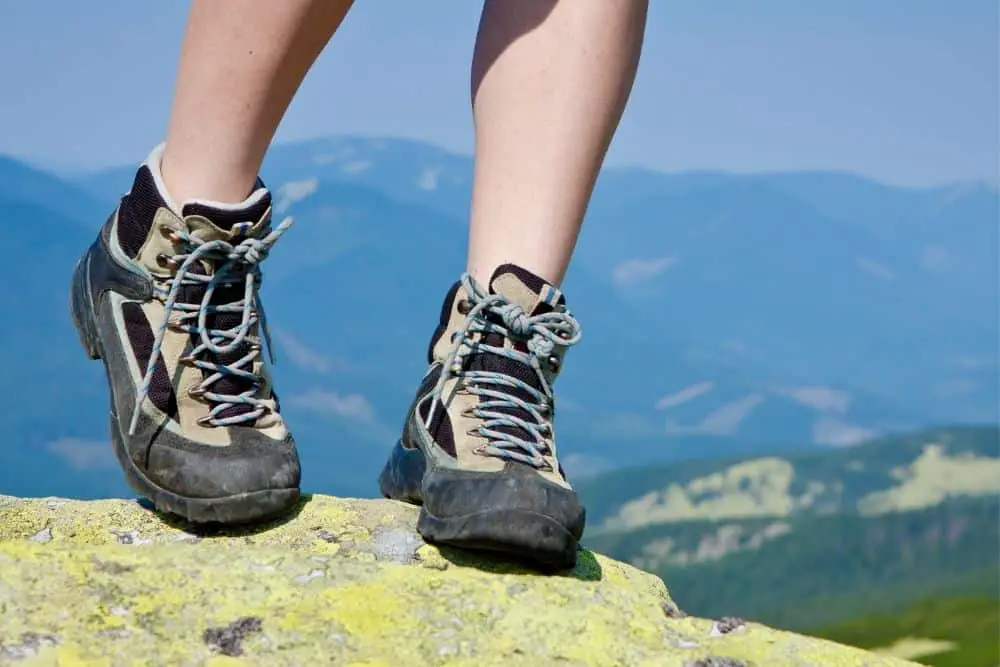When you think of hiking boots, your mind probably imagines long distance hikes, challenging trails, mountaineering, and backpacking. Why? Because it is part of their primary design from the manufacturers.
However, these days, many people wonder about the possibilities of wearing them for casual walks. Moreover, with their structure, will these boots be suitable for walking on different terrains other than hiking, like asphalt or concrete?
You may also be wondering if hiking boots are any good or unfit for walking. If you are a regular hiker, you may not want to buy walking shoes since you have boots that can serve almost the same purpose.
Regardless, this article answers your question of whether you can wear hiking boots for walking. In addition, we’ll examine the pros and cons of wearing hiking boots for walking, then the best terrain they are suitable for, etc.
Want to find out? Read on to get the details.
Contents
Can Hiking Boots be Used for Walking?

The simple answer is yes. You can wear your hiking boots for walking. Although these boots are built explicitly for different hiking terrains, you can walk in them by choice or the only ones available.
The structure of hiking boots tends to offer more support to your ankle when you are walking, compared to regular walk shoes. However, you can consider hiking boots as footwear for more strenuous walks, allowing you to wear them on your long distance walks as well.
Honestly, the choice of whether to wear your hiking boots for walking depends on you. In the end, you have to decide whether you are comfortable in them or you would rather wear regular walking shoes.
Furthermore, hiking boots can make your walk on the street or around town a good or an awful one, depending on different reasons. Now, let’s examine the good and the bad for wearing your hiking boots for walks.
Pros of Wearing Your Hiking Boots for Walking
1. Highly Durable
Firstly, hiking boots are pretty sturdy, unlike most regular walking shoes. Why? They are built for different hiking terrains, and they are modified to withstand different hiking situations. Therefore, they can be great for walking.
Furthermore, since these boots work great on different hiking terrains, they can work well on different walking terrains like concrete or asphalt. They won’t wear off quickly as your regular walking shoes would.
Additionally, hiking boots’ soles are thick, durable, and they provide traction. Plus, you can wear them for long or short-distance walks around the block or in different environments.
2. Adaptable To Cold Weather Conditions

Hiking boots tend to provide enough warmth. They provide the right amount of warmth for your feet when hiking, so you can also walk in them during cold weather conditions.
Hiking boots have the right build and padding that will keep your feet warm. So, if you feel like walking on a cold morning or evening, you could wear your hiking boots instead of your walking shoes.
3. Ankle Support
Hiking boots support your ankles pretty well when you wear them. However, you need your feet to carry your weight correctly when walking to avoid falling or slipping.
Plus, your ankle region is somewhat prone to injuries, so hiking boots can make up for additional support when you are out walking. Since walking terrains are not as rugged as hiking trails, the hiker’s boot can protect your feet and ankles more than the regular walking shoes.
Also, hiking boots can help prevent stress fractures, which could happen due to increased physical activities, including walking. Therefore, hiking boots give you the proper ankle support, so you don’t suffer stress fractures, slips, or falls while walking.
4. Suitable For Long Distance Walks

Hiking boots are tough; likewise, they can survive rugged hiking or walking adventures. If you prefer longer walks, you can wear hiking boots instead of your walking shoes or if there are no other alternatives.
This is because hiking boots tend to protect and keep your feet warm for an extended period, especially during cold weather. Then, they are built for “more advanced” walking.
Even if you are unsure about wearing hiking boots for short walks, you can wear them for long-distance walks. The thing you may have to worry about is comfort or the weight of the hiking boots.
5. Water Resistance
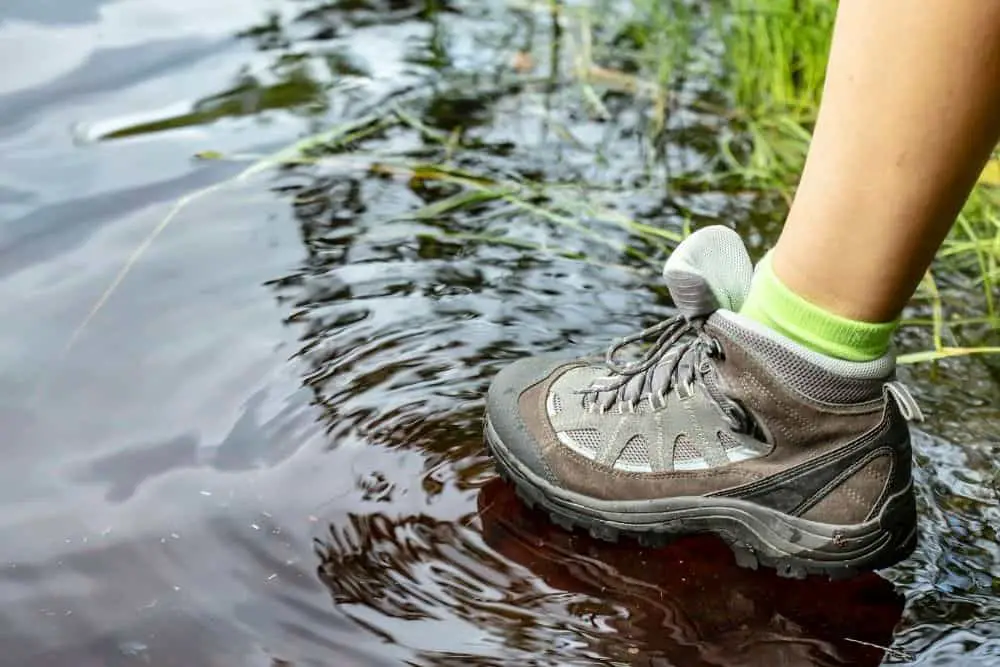
Everyone needs “water-resistant” footwear in their shoe collections. This is because you need to wear something that’ll protect your feet during the rainy seasons.
Shoes that are not water-resistant make your feet wet and irritable anytime it rains, and you get caught up in it. Imagine walking or standing in the rain with wet socks and shoes; you know how uncomfortable that can be.
You can also be sure that your feet and socks are fine in case you accidentally step into water puddles or an annoying driver splashes water on you.
While not all hiking boots are water-resistant, you can purchase the ones with some level of resistance if you want them to double as your walking shoes. Also, they are a safer and better choice if you want to protect your feet from any other fluid trying to get in.
6. Act As A Good Alternative
Hiking boots can be good alternatives if you don’t want your regular shoes to wear off in a short period.
Whether you are walking to your workplace, an event, or burning calories, you can wear hiking boots for walking. You can then change to your regular footwear at your workplace or the occasion.
Wearing your hiking boots can be better, allowing you to prevent replacing your regular shoes at intervals when your hiking boots can walk any terrain.
You can wear your hiking boots for walking for different reasons, and they can be better than your regular walking shoes. However, there may be downsides to wearing your hiking boots for walking.
Cons of Wearing Your Hiking Boots for Walking
1. Weight Rating
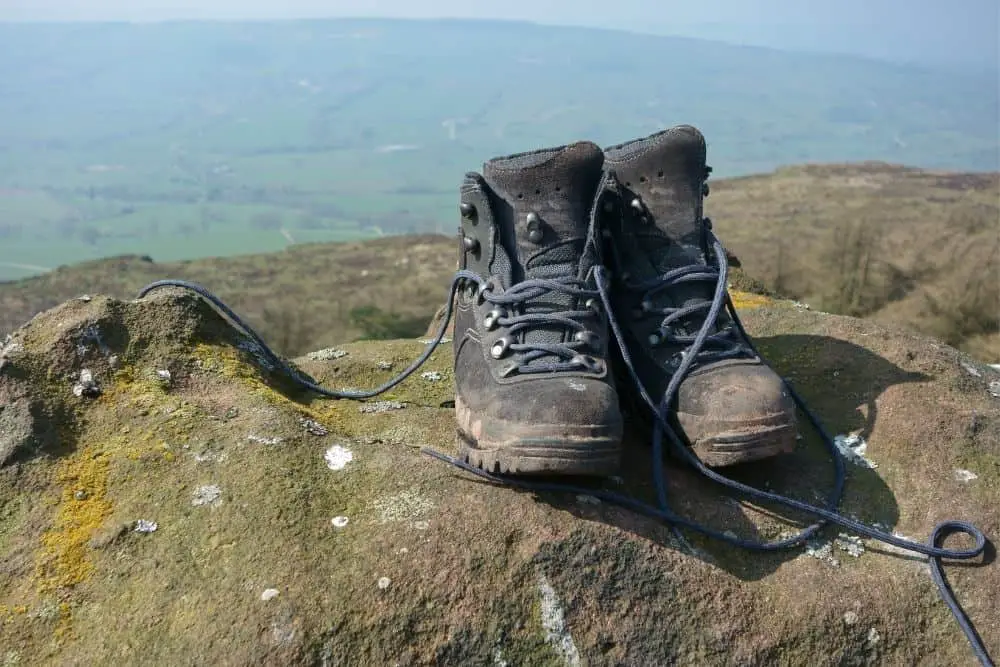
You can usually refer to hiking boots as lightweight. However, when compared to other shoes for walking, you can term it as heavy. Unfortunately, this means that they’ll require more energy to lift than regular shoes.
This could make you easily tired when you’re walking, even when you’ve planned to walk a long distance. If you prefer lightweight shoes for regular walks, then maybe you should get separate shoes for walking.
2. They can be uncomfortable
Generally, hiking boots are quite comfortable, no doubt. However, in terms of comparison with walking shoes, they underperform. This is because their structure is quite different from walking shoes since they are for different purposes.
3. They are stiff
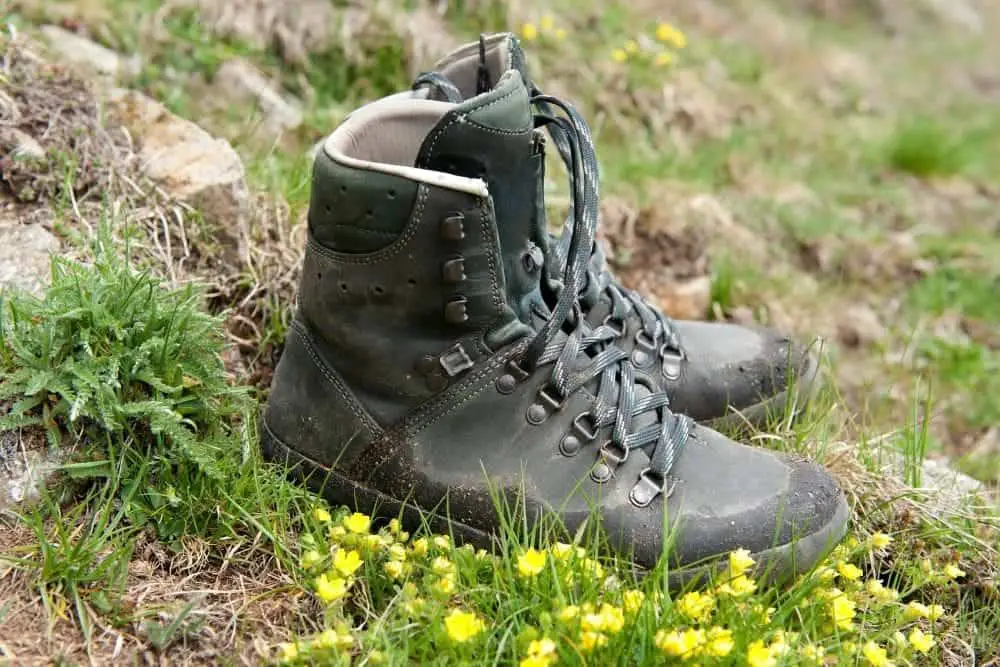
Hiking boots cushioning can be stiff, both inside and at the upper part. As a result, they have a prolonged break in time and it may cause pain in your ankle. Furthermore, you are more likely to get sour or blisters on your feet.
4. Less breathable
Hiking boots are usually not as breathable as your regular shoes because they are built for warmth. Walking in hiking boots can make your feet sweat and build up moisture. As a result, they lead to blisters, pains, and swollen feet.
5. They are not stylish
Hiking boots are not-so-stylish and pretty rugged for regular walks. However, if you want to be fashionable during your walks, you may want to consider other stylish options, like hiking or shoes.
6. Their soles wear out faster
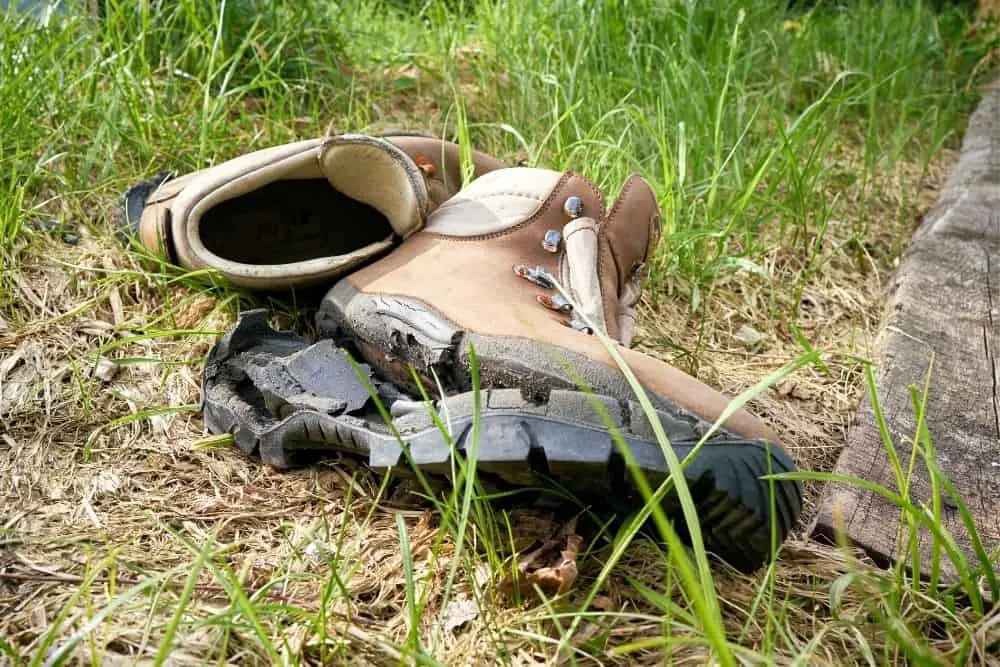
Hiking boots’ soles are for hiking terrains, like soil, grass, and mountains, meaning their soles could wear out faster on concrete or asphalt. Also, if you wear them rather too often for walking, their soles may wear out faster.
This means that you may be shopping for new pairs of hiking boots for your next hiking adventures. Even though every shoe’s soles wear off, it may be best if you don’t wear your hiking boots too often, so they don’t wear off quickly.
7. They are expensive
Hiking boots are quite expensive, especially when compared to walking shoes. For this reason, it may be best to have a separate shoe for walking. But, on the other side of things, you might not want to have to replace your hiking boots too often.
Choosing The Right Walking Hiking Boots
So far, we have established that you can wear your hiking boots for walking. Additionally, we highlighted the pros and cons of wearing them for hiking.
Whether you can wear your hiking boots for walking depends on you, and your comfort level. However, if you would rather still have your hiking boots and walking shoes as one, then you can consider some factors when shopping.
You should consider temperature, your hiking and walking experience, and comfortability. So, what is the “right” hiking boot for walking, and what should you look for to determine your purchase?
1. Weight
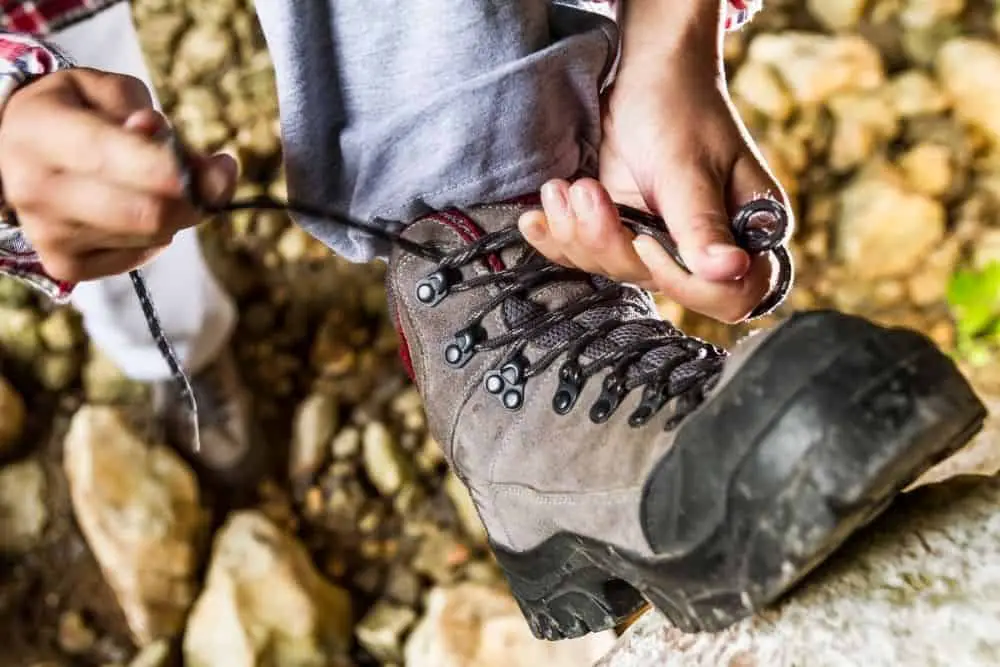
Each hiking boot probably weighs between 13oz to 26oz, so you can decide which weight is bearable for you to lift. This is because the weight will determine how much energy you’ll need to lift them, or how tired and or how soon you’ll get tired when walking.
Therefore, before you buy your hiking boots, determine how often and what distance you’ll wear them for walking. For instance, heavy boots are suitable for long walks and neighborhood walks.
They also provide good ankle support, are waterproof/snowproof, more durable and protective, and ideal for heavier people. However, they can tire you quickly, don’t usually breathe well, are not flexible, and take time to break.
On the other hand, light boots are more breathable, comfortable, flexible, soft, and less tiring. So you can go for them if you need something more lightweight and comfortable.
However, they are not as durable as heavy hiking boots. Also, they don’t breathe well, the midsole may be too thin, not really suitable for lengthier and tougher walks, and not a good choice for heavier people.
You have to decide which weight is more bearable for you. For example, would you rather enjoy your walks or your hiking adventure? Or do you walk more often than you hike? Also, do you hike on challenging terrains or not?
2. Material
You need to consider material when you’re choosing your hiking boots. Some materials are more durable than others, and the one you choose determines how long you’ll wear it.
Also, the material determines their breathability, water/moisture resistance, weight, and lots more. Therefore, you can choose materials that breathe well if you want to enjoy your walks. Let’s check out some materials:
Synthetic

Synthetic materials vary from polyester, nylon, and polyurethane. Most times are meant for imitating natural materials, like leather, cotton, or wool.
In addition, synthetic materials are moisture-resistant, lighter, and more flexible. However, they may or may not fit well for both hiking and walking.
Nubuck and suede

Other boot materials are nubuck and suede. They are an excellent alternative to full-grain leather; however, they are not as hardened or water-resistant.
Also, suede leather doesn’t breathe well compared to leather because manufacturers sand them. As a result, they may be unsuitable for hot weather.
If you want to solve the waterproof issue, you can add waterproofing spray to the body without adding additional weight to the boots.
Full-grain leather

This material is durable, water-resistant, and breathable if it isn’t clogged with sand, oil, or dirt. Then, full-grain leather is also water-resistant.
If you want to get the most out of it, ensure you clean it often, so it remains breathable. Plus, you might want to condition it so it’ll be soft and breathable. You can enjoy full-grain leather hiking boots for both hiking and walking, provided that they have good soles.
Mesh

Mesh hiking boots are extremely breathable; however, they can be less water-resistant and prone to tearing. Nevertheless, you can get them if you prefer breathable hiking boots. Also, they are very comfortable for walking and hiking.
3. Sole
Many hiking boots’ soles are made from rubber, but their grips vary from one another. You can test different hiking boots to check how well they grip the ground when you walk in them.
Also, some hiking boots, and soles are made of Vibram, which are also a good choice because they last a long time. Others have proprietary soles whose grip varies. The better the sole grip, the better you’ll enjoy hiking and walking in your hiking boots because they’ll be flexible.
4. Toe cap
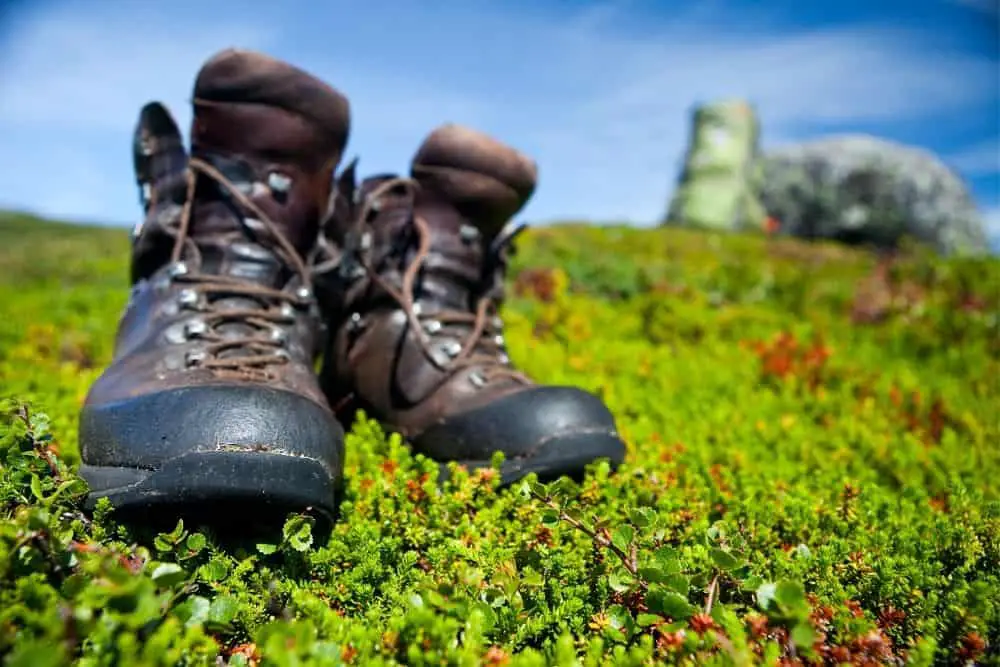
This toe cap usually lies at the front of the boot to protect your feet from the impact caused by collisions against any hard surface. You might not have toe caps as an essential feature on hiking boots for walking. However, they can still add protective features.
As our expert advice, you only need to get hiking boots with rubber or composite toe caps for walking because other types can make you uncomfortable, by increasing the footwear’s overall weight. Also, you only need them if you’ll be walking on rocky or stony terrains (such as Grand Canyon or Smoky Mountains).
5. Waterproof membrane
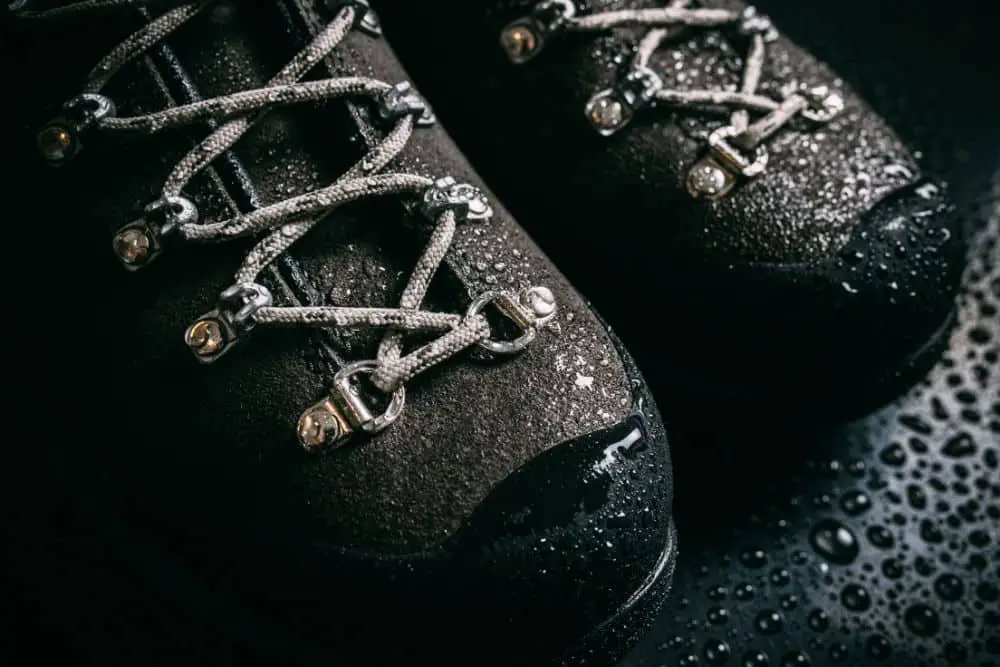
Waterproof membranes are usually situated between the inner and outer layers of hiking boots. They form waterproof barriers to prevent water from getting into the boots.
One of the downsides is that they trap moisture in your boots and make walking or hiking uncomfortable. Also, some waterproof membranes aren’t as breathable as others, like leather.
6. Gusseted tongue
Gusseted tongues are layers attached to the upper part of your boots to prevent dirt or anything that’ll make you uncomfortable from getting into your boots.
Plus, they make these boots suitable for trail hiking, but they can be unbreathable, making you feel uncomfortable when you are hiking. So before you buy, check how well your feet can breathe in them, especially if they are both hiking and walking.
7. Traction
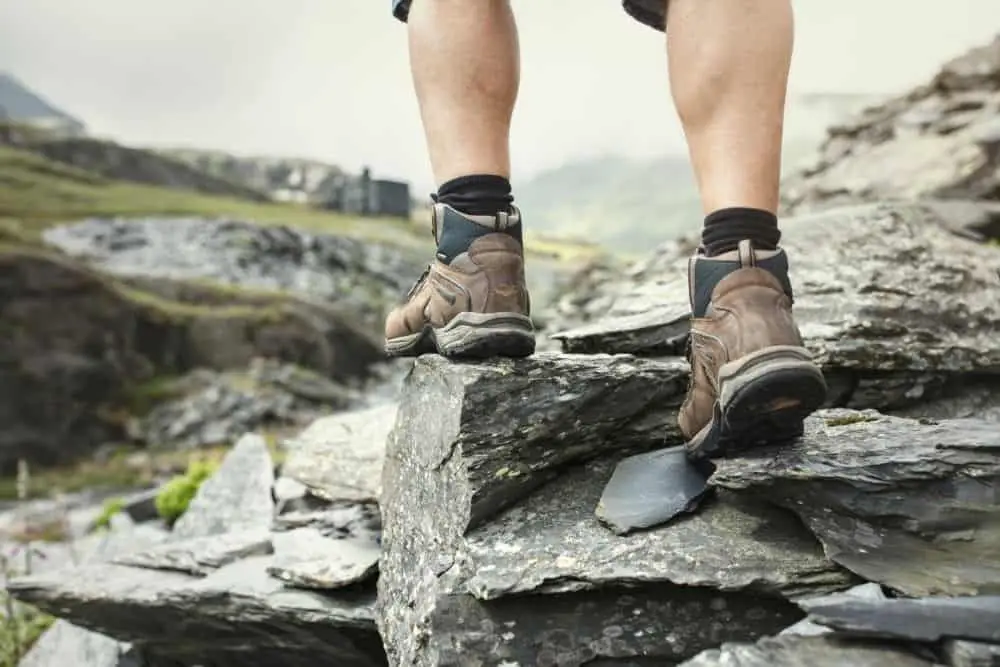
Your hiking boots need excellent traction so as not to cause easy slipping or get you injured while walking or hiking. This is why you have to check for the proper boots’ lug, which is the tread at the down part of your boots. So you can tell which terrain most suits them.
You can get hiking boots with wide, shallow lugs if you hike on smoother terrains, and they are also suitable for walking. On the other hand, deeper and narrow lugs are suitable for harsher and uneven terrains.
Why? They also give better traction than shallow lugs. Also, lugs with different sizes and shapes are suitable for wetter and drier conditions. They also provide better stability on different trails.
Conclusion
Can hiking boots be used for walking? Yes. However, you should know that while there are benefits attached to that, there are also downsides. So, when buying your “dual-purpose” hiking boots, you have to consider different factors.
That is, you have to consider your comfort, temperature, hiking or walking experience, weight, and material. Regardless, this article has discussed different hiking boots materials.
You can decide which material is more suitable and comfortable for your hiking and walking purposes before buying. Overall, go for whichever hiking boots will serve you best.

